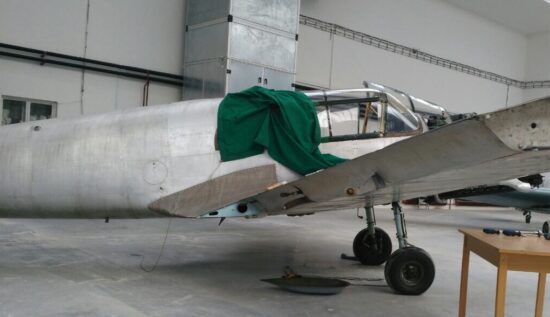Messerschmitt Bf 108 B-2
The BFW Company (latter Messerschmitt A.G.) designed the Messerschmitt Bf 108 Taifun in 1934. The original design was for a light tourist double seater, developed for the German team taking part in the 1934 international air race Challenge.
The production of the improved version, the Bf 108B, was set-up in November 1935. The B version was redesigned to be a four-seater with a new Argus As 10C engine. The Bf 108B was a very modern light aircraft with an all-metal airframe, retractable undercarriage, adjustable propeller, and with excellent flight characteristics.
The military version of the Taifun was the Bf 108B-2 and was acquired by the Luftwaffe in 1939. It was widely employed during the war years by all operational Luftwaffe units as a light liaison aircraft. The production was transferred to France in 1942, where 170 Bf 108D were completed before the liberation of France in 1944. French production continued after the war where another 115 aircraft under the name of “Nord 1000” were manufactured.
In total 626 military Taifuns, versions B-2 and D-1, were produced except at least 180 civilian or export version Bf 108 B-0 and B-1. The Luftwaffe employed most of them, but many other air forces used this fine and popular aircraft. The Hungarian AF had 8 Taifuns, the Italians had 3 and Rumanians had a total of thirteen, ten pieces of army and three civilian customers.The USSR bought two and Switzerland and Yugoslavia had 12 each. One aircraft was used in Chile, one or two in Japan and one was in Australia. The Bulgarian AF had 6 and at least one was in Spain. One Bf 108B-1, coded XC44, was operated by the US embassy in Berlin. Two Bf 108B-1s were flown by the German embassy in London but the RAF confiscated these two aircraft in 1939. After the war, three Bf 108B-2 was flown in Czechoslovakia, two in Poland, one in Denmark and one in Sweden.

Our Messerschmitt Bf 108 after unloading from a container in Prague
You can follow the progress of work on our Messerschmitt here.